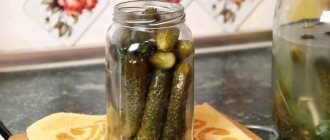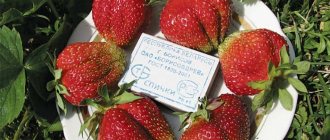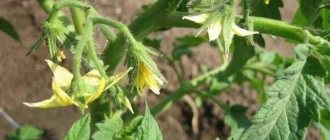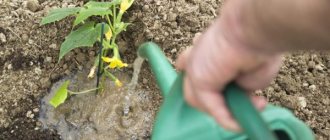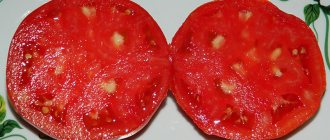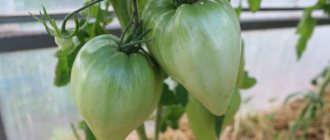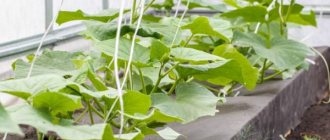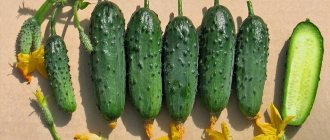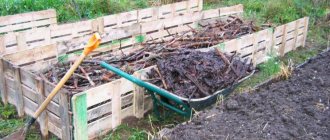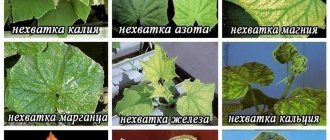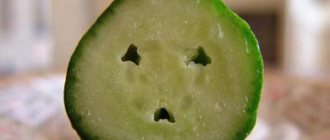Cucumber Tchaikovsky F1 is a relatively new early-ripening hybrid. He will be one of the first to enjoy the harvest in the garden, which will appeal to all summer residents who have time to miss fresh vegetables over the winter. In addition to fresh consumption, the cultivar is also suitable for pickling and preservation.
| Landing location | Ripening time | Mode of application | Fruit length | Group | Fruit smoothness | Pollination method |
| Universal | Early ripening (35-45 days) | Universal | Short (gherkins) - less than 10 cm | Hybrid | Slightly lumpy | Parthenocarpic |
From Holland with warm greetings
In 2009, she introduced a new hybrid cucumber variety, Kibria, which captivated vegetable growers with its excellent early harvest. But soon the hybrid also showed a negative feature: it quickly depleted the soil, especially in greenhouses. After the first good harvest, the cucumber, without constant care, lost its ability to bear fruit: the greens were crushed, the growing season slowed down and the plant died. Because of this, his popularity quickly fell.
Four years later, the company’s breeders presented an improved version of Kibria - the Tchaikovsky F1 variety, which began the “symphony” of cucumber varieties from Rijk Zwaan. Like its predecessor, the new variety has excellent resistance to powdery mildew, mosaic virus, and cladosporiosis. All this, together with a short ripening period, made it possible to use the cucumber in arid regions with hot summers.
Plants of this variety do not require pollination
The main problem with growing a rich harvest of cucumbers in the southern regions is the high probability of drought due to the small amount of rain, the bulk of which falls in April, May, early June, then in August, September, and early October. Therefore, in the south, varieties used in the scheme: spring - summer, summer - autumn, which begin to bear fruit in a short time, are highly valued.
Very quickly, the Tchaikovsky F1 variety became a sales leader, winning respect from gardeners who strive to get a quick harvest by growing cucumbers in greenhouses. Cucumber does not require pollination and allows you to grow the crop in early spring, when insects have not yet come out of hibernation.
With such yields, it is not difficult to earn the respect of gardeners
Reviews
The relatively young hybrid has already received recognition from gardeners. It is difficult to find negative reviews about it .
Nikolay, Ryazan : “For 3 years I have been growing this particular hybrid.
Compared to other “Dutch” varieties, I note the high yield, small fruit size and lack of bitterness. I really like it canned and fresh. The good news is that he rarely gets sick and is attacked by pests. I have a plot under the house, there are tall trees nearby, I thought that partial shade would not allow me to grow a good crop, but in the end it turned out that it was only good for him.”
Elena, Nizhny Novgorod : “He has no equal in conservation. The cucumbers are sweet and crunchy. During growth, many side shoots are formed, each of which bears fruit. At the same time, the bush does not take up much space.”
Natalia, Perm : “I have been growing greenhouse cucumbers for 10 years. Based on personal experience, I can say: Kibria is a very early, tasty variety, suitable for eating and pickling. Tchaikovsky is similar to Kibria, but matures a little later.”
Description of the variety Tchaikovsky F1
The yield of this variety is up to 50 tons of cucumbers per hectare. From planting to receiving the first greens, only 40–45 days pass. It is grown in greenhouses and in open ground by trellis or horizontal method. Ties up to three cucumbers in one bunch. Good formation of green mass along with active regeneration allows the plant to quickly recover from shock and recover from illness. It is formed into one stem, the side branches are small, up to 30–40 cm. Plants are planted 30–35 cm apart.
Tchaikovsky F1 belongs to the parthenocarpic varieties, which, unlike those pollinated by bees, are characterized by the friendly formation of ovaries and the ability to bear fruit until late autumn.
The fruits are up to 15 cm long and weigh 50–60 grams and have a uniform dark green color. The surface is densely covered with tubercles with spines. Therefore, you should wear gloves when harvesting. The pulp is fleshy, without bitterness, crispy, and has a pleasant taste characteristic of a cucumber.
Video: greenhouse cucumber plantation Tchaikovsky F1
Table: advantages and disadvantages of the variety
| Advantages | Flaws |
| Parthenocarpic variety: does not require insects for pollination. | If pollinated by insects, the cucumber loses its shape and grows crooked. |
| Early stages of ripening and development of the bush. | Requires increased feeding. |
| High yield. | There is a danger that the greens will outgrow. |
| Heat-loving, tolerates heat well. | Not suitable for growing on the ground in regions with cool climates. |
| Resistant to diseases characteristic of hot climates. | The variety is not resistant to diseases caused by sudden changes in weather. |
| Pleasant taste, small size cucumber. | The gherkins are covered in thorny thorns. |
| Well stored and transported. |
Description of the species
The hybrid variety Tchaikovsky has a strong root system. Scourges take up little space and have excellent regeneration. During the growing period, the plant simply withholds fruit load, but it is recommended to tie up the vines. Ovaries and small green leaves appear on the vines. 2-3 fruits are created in 1 node.
Zelentsy have a tubular configuration, their length can reach 8-12 cm. The diameter is 3-4 cm, and the weight ranges from 75 to 85 g. The fruits are dark green in color, their color is almost the same type. There are no lobar stripes or yellowness on the lumpy surface. If you cut the greens, you can see a thin skin and pale green pulp with small grains located in it.
Seed preparation
When buying seeds, pay attention to the presence of appropriate markings on the packaging indicating pre-planting preparation: as a rule, processed seeds are colored. If there is no marking and the seeds are of normal color, then it would be useful to soak them in a nutrient and disinfectant solution prepared from a bioactivator (Vermisol, Azotofit, Epin, Zircon) and a disinfectant, for example, potassium permanganate. This will not only improve germination, but also protect against root rot and fusarium.
Before planting, it would be a good idea to soak cucumber seeds in a nutrient and disinfectant solution.
Table: bioactivators and seed exposure time
| Drug name | Dilution rate | Aging period |
| Vermisol | 1:5, diluted with warm water | 12 hours |
| Epin | 1 ml per 2 liters of water | 24 hours |
| Azotophyte | 1 teaspoon per 500 ml of water, 2 tablespoons sugar, leave for 2 hours | 1.5–2 hours, dry for 4 to 8 hours |
| Zircon | 1–2 drops per 300 ml of water | 8–18 hours |
Advantages and disadvantages
The Tchaikovsky hybrid has the following advantages:
- Excellent taste characteristics of the fruit;
- Good keeping quality and transportability;
- Stress resistance;
- Good immunity;
- High productivity;
- Long fruiting before the onset of cold weather;
- Good tolerance to high temperatures;
- No tendency of fruits to yellow.
The hybrid also has disadvantages:
- Limited regions for growing in unprotected soil;
- Increased demands on applied fertilizers;
- The presence of prickly thorns on green plants.
Preparing the soil and planting site
Before planting, complex fertilizer is applied to the soil and dug well, leveling the area with a rake. It is best to add potassium and nitrogen fertilizers before planting, since potassium and nitrogen salts are washed out with water over the winter. Ammonium nitrate should be added in the fall, despite the fact that potassium and nitrogen are washed out, the phosphorus contained in it will not disappear anywhere and will remain in the soil, forming poorly soluble phosphates that are well absorbed by plants.
The cucumber is capricious. He does not like direct sunlight, shaded beds, too dense soil, or drafts. Try to plant the plantation in areas where shade and sun alternate with each other. The optimal bed is one where there is sun in the morning, and in the afternoon it is covered by shadow from trees or tall plants (corn, sunflowers).
As they develop, the bushes grow, so Tchaikovsky F1 cucumbers are recommended to be grown on trellises
Boarding pattern and time
For quick germination, the crop should be planted in soil warmed to +16 °C. If this condition is met, the first shoots will appear 5–6 days after sowing. The optimal planting time is mid-to-late May. At this time, the soil is already well warmed up (+20–25 °C), frequent rains occur, and the threat of frost disappears.
Remember: when the temperature drops below +8 degrees, cucumber plants die, so in such a case, take care of reliable shelter.
For a late harvest, which is planned to be harvested before mid-October, and if planted in a greenhouse, then (depending on the region) until late November, the seeds are planted in July. To get an early harvest, seeds begin to be sown for seedlings in early or mid-March. Seeds are sown in cups or cassettes, one per cell. The cucumber is a great individualist and does not tolerate close proximity.
Three tablespoons of wood ash and one spoon of nitroamophoska are added to a bucket of prepared soil, consisting in equal parts of forest or turf soil and peat, mixing everything thoroughly. Cups are filled with soil mixture and cucumber seeds are planted in it.
Phases of seedling development - table
| Phase | External signs | What to do |
| Germination | A spine appears. | The plant is transplanted into cups filled with soil mixture. |
| Shoots | A plant with two cotyledon leaves appears above the soil mixture. | When watering, do not overwater the seedlings, protect them from drafts, and provide sufficient light. |
| Real leaf | A real one appears between the cotyledon leaves. | When watering, do not overwater the seedlings, protect them from drafts, and provide sufficient light. |
| Third and fourth sheet | The cotyledon leaves slowly die off, and true leaves actively grow on the stem. | You can start feeding the seedlings. |
| Landing in the ground | The real leaves of the seedlings have become stronger and increased in volume. | The seedlings are transplanted into the ground, deepening the top leaves, the buds and ovaries are pre-torn off. |
The first true leaf appeared
The distance between seedlings should not exceed 35–40 cm, between rows 1–2 m. Planting density per 1 sq. m - 4–6 bushes.
Seedlings grown in peat pots are planted together with the container. The cucumber is removed from the plastic cup along with a lump of earth so as not to damage the roots. The cup can be cut and removed by unwinding it in a spiral.
Video: forming cucumber bushes and adjusting lighting
Soil fertilization
Fertilizing “Tchaikovsky F1” cucumbers during greenhouse and ground planting is carried out in different ways.
For soil cultivation:
- Spring pre-planting soil fertilizer consists of 10 g of nitrogen, 12 g of potassium and 12 g of phosphorus per 1 square meter. m.
- After two leaves appear on the plant, water with a solution of 1 tbsp. l. urea in 10 l. water.
- 2 weeks after the previous fertilizing, the area with cucumbers is watered with a solution of 0.5 kg of mullein per 10 liters. water.
- At the time of flowering, you can spray the soil with a solution consisting of 2 tbsp. ash and 15 g of urea, diluted in a bucket of water.
- During the formation of fruits, 0.5 kg of chicken manure and 2 tbsp are dissolved in a bucket of water. l. wood ash.
- After harvesting, the land is fertilized with a mixture of equal amounts of compost with rotted sawdust and the addition of a handful of ash.
Greenhouse planting of cucumbers should be fed in the following way:
- Before planting, the soil is fertilized with a mixture of equal amounts of ammonium nitrate, potassium sulfate and superphosphate.
- At the moment the fourth leaf appears, the mixture is added to the soil at the rate of 3 square meters. m.: 15 g of potassium, 10 g of ammonium nitrate and 20 g of double superphosphate. This amount is dissolved in a bucket of water.
- Half a month after the last application of fertilizer, the plant is fed with a dissolved mixture of 1 tbsp. l. nitrophoska, 0.5 l. mullein, diluted in water, 1 tbsp. ash and 50 g of potassium sulfate, 1 teaspoon of boric acid and 0.3 g of manganese. For 1 sq. m. 3 liters is enough. such a mixture.
- With the beginning of fruiting, the plants are fed three times at intervals of 20 days with mullein diluted in water at the rate of 1 tbsp. l. on a bucket. One square meter of land is filled with 7-8 liters of such liquid.
- As an autumn soil preparation for 1 sq. m. manure mixed with dolomite flour is added (a bucket of manure and 0.5 kg of flour).
Watering, fertilizing
Tchaikovsky F1 creates a significant load on the soil, and therefore requires balanced nutrition as it grows. When planting, wood ash and humus are added to each hole in equal quantities, usually no more than one scoop. The plant immediately receives a good boost for the proportional development of the root system and green mass.
When applying fertilizer, monitor the condition of the plant. The best indicator is the appearance of the leaves, vines and stem.
To prevent micronutrient deficiency, carry out complex feedings every 10–14 days.
Table: complex feeding of cucumbers
| Type of feeding | Preparation | Application method |
| Chicken droppings | For 10 liters of water, 50 g of chicken manure. After stirring well, leave for 10 days to ferment. | Root feeding. |
| Manure | For 10 liters of water 1 kg of rotted manure. | Root feeding. |
| Wood ash | 1 tablespoon of ash is diluted in 10 liters of water. Scoop ash at the root, before watering, once a season. | Root feeding. |
| Humate fertilizers | Diluted depending on the concentration according to the manufacturer's instructions. | Root and foliar feeding. |
| Chelated fertilizers | Diluted according to the instructions on the package. | Foliar feeding. |
Remember: by applying fertilizers, you compensate for the lack of microelements in the soil. It is very important not to overfeed the cucumber so that “fatification” does not begin. The first signs of an excess of microelements are a change in the appearance of the leaves, stems, and the cessation of the formation of ovaries.
Signs of deficiency and excess of microelements - table
| Microelement | a lack of | Fertilizing | Oversupply | Causes and methods of control |
| Iron and copper | Chlorosis, the plant turns yellow, the leaves are small, growth slows down, the color crumbles. | Foliar feeding with chelated fertilizers, watering with infusion of chicken manure. | Brown spots appear on the leaves, young leaves suffer from interveinal chlorosis. | Occurs when there is an excess of treatment with copper and iron sulfate. Stop processing. |
| Manganese | The leaves are dark green in color, gradually curl, and tubercles form on the surface. | Foliar feeding with chelated fertilizers. | Interveinal chlorosis and brown spots appear on older leaves. | Occurs on acidified soil. Add lime, dolomite flour, chalk powder, and mulch. |
| Potassium | A yellow border forms along the edge of the leaf, and the greens take on a pear-like shape. | Feed foliarly or at the root, with humate fertilizers, chelates, compost infusion, and ash. | The leaves turn white, the internodes lengthen, the plant withers and dies. | Stop feeding the plant and watering. |
| Nitrogen | The stem becomes thinner, the cucumber turns pale, the upper leaves turn yellow, the lower leaves fade, gradually drying up, and the tips of the greens become pointed. | Water with infusion of chicken manure and mullein. Foliar feeding with chelated fertilizers or humates. | The leaves and stem turn dark green and the plant stops bearing fruit. | Stop fertilizing and watering. Sawdust is buried under the root, mixed well with the soil. |
| Magnesium | Cucumber leaves fade, become brittle, the lower ones become covered with yellow spots, the green color is only on the veins. | Foliar feeding with chelated fertilizers. | Leaves darken and curl. Due to the death of the roots, the cucumber dies. | Add chalk, lime, dolomite flour and stop watering. |
| Bor | The ovaries and side shoots die, the flowers fall off. | Foliar feeding with chelated fertilizers. | The edge of the leaf dies and the leaves become dome-shaped. | Stop feeding. |
| Phosphorus | The lower leaves turn yellow and die, the ovaries and flowers fall off. | Foliar feeding with chelates. When watering, phosphorus-potassium fertilizers are added to the water. | The leaves turn yellow and fall off. | Application of potash fertilizers that do not contain phosphorus. |
| Sulfur | The leaves change color, the leaf blade becomes rugged. | Foliar feeding with chelated fertilizers. | The leaf becomes covered with scaly growths and becomes coarser. The leaf color changes to grayish-brown. | Stop feeding. |
| Zinc | Leaves of varying sizes with uneven yellowing. | Foliar feeding with chelated fertilizers, root feeding with zinc sulfate. | Discoloration of the leaf near the veins. | Stop feeding. |
The main signs of mineral starvation in cucumber
Cucumber is a moisture-loving plant; in the hot season, for normal growth, especially during the fruiting period, an adult bush may need up to 3 liters of water per day. Watering is carried out in the evening, after the temperature drops. It is most rational to use a drip irrigation system; this makes it possible to evenly distribute moisture, control its quantity, and facilitate root feeding of the plant. To retain moisture during hot weather, be sure to mulch. The average volume of water for each adult plant is 2 liters of water.
Cucumber is a moisture-loving plant; Tchaikovsky F1, like a true European, prefers progressive drip irrigation
When watering, make sure that the water does not flood the stems of the plant, expose the roots, or form potholes. Excess moisture will lead to fattening, the development of root rot, fungal diseases on the leaves and stems, wilting and death of the plant.
Diseases and pests
The variety is resistant to cucumber mosaic virus, brown spot, powdery mildew and white rot. But, nevertheless, he is susceptible to other diseases. The most dangerous is considered to be downy mildew or downy mildew, which occurs with sudden changes in temperature and frequent precipitation. In addition to diseases, plantings can be seriously damaged by pests that attack stems, roots, green mass, buds and ovaries.
Photo gallery: the main enemies of cucumber beds
Anthracnose disfigured cucumber greens
A colony of melon aphids occupied a cucumber leaf
This leaf is affected by downy mildew
The reverse side of a leaf affected by peronosporosis
Slugs are dangerous pests of vegetable crops, including cucumbers.
New slugs will soon appear from this clutch
There are many methods of pest and disease control, both chemical and traditional, which are used in different ways. Folk remedies are used to prevent disease, very rarely for treatment. Chemical remedies can be used for both prevention and treatment of cucumber.
Table: traditional methods of preventing diseases and pests
| Disease, pest | Signs | Methods of treatment and prevention |
| Downy mildew | The leaves become covered with yellow spots, a gray coating forms below with black dots of fungal spores, and the plant dries out. | Spray solutions:
|
| Anthracnose | Brown spots with a depressed surface on leaves and fruits. |
|
| Cucumber mosaic virus | The leaves become covered with yellow spots, curl, the fruits are disfigured by necrotic spots and stripes, and the tip of the greenery dies. |
|
| White rot | The fruits and stems become covered with whitish “threads” of mold, and the plant rots. |
|
| Aphid | The leaves of the plant are curled, on the inner sides there are colonies of black or green insects. |
|
| Slugs | Silvery marks appear on leaves, stems and soil. The surface of the leaf becomes covered with holes, and the stems eaten at the root fall off. | The soil around the bush is sprinkled with lime, ash or salt. |
| Spider mite | The leaves are entangled in a cobweb, under which a colony of mites develops. | Spray with a solution of ash and laundry soap. |
| Thrips | They gnaw the leaves and suck out the juices. | No. |
Unlike folk remedies, chemical means of protection must be alternated and not used twice in a row, in extreme cases - more than three. This is due to the adaptation of fungal pathogens to them and the formation of resistant strains of fungi. In addition, modern means not only prevent diseases, but also treat them.
Treatment with chemical protective agents - table
| Plant development phase | Disease, pest | A drug |
| 3–4 sheet | Downy mildew | Quadris or Previkur Energy |
| 6–8 sheet | Downy mildew, aphids, spider mites | 6 g of Topaz, 25 g of Ridomil Gold package Vertimek 018 EC are diluted in 5 liters of water or according to the instructions the drugs Alyet and Luna |
| 10–12 sheet | Downy mildew | Ridomil Gold or Previkur Energy |
| Budding and flowering | Downy mildew | Quadris (6 ml per 5 liters of water) or Infinito (12 ml per 10 liters of water) |
| Beginning of fruiting | Aphids, downy mildew, anthracnose | Infinito 12 ml + Confidor 1 per 10 liters of water, Quadris 6 ml + Actellik 12 ml per 5 liters |
| Fruiting | Downy mildew, anthracnose | Infinito 12 ml per 10 liters of water or Quadris 6 ml per 5 liters of water |
It should be remembered that there is a danger of poisoning with chemicals that are classified as enteric-contact toxic substances. Therefore, be sure to adhere to the waiting period from processing to harvest indicated on the packaging.
Features of care
Cucumbers are considered capricious plants in terms of care. You will definitely need to carry out regular watering, loosening the soil and removing weeds, and preventive spraying against pests. Farmers also shape the bush to improve fruiting.
Watering and fertilizing
Cold water can be detrimental to plants. Therefore, it is recommended to water cucumbers with warm water or use drip irrigation of the soil. Watering depth - up to 10 cm.
Important! If watering is not carried out regularly, the cucumbers will begin to taste bitter.
And if there is insufficient watering, they will become small. Watering rules :
- the water pressure should be weak;
- Do not allow water to get on the leaves - this will create favorable conditions for the development of fungi;
- morning watering is preferable to evening watering;
- To retain moisture, cover the root zone with mulch.
Cucumbers thrive in light, loose soil rich in nutrients - nitrogen, phosphorus and potassium .
If rotted manure or compost is added during planting, it is nutritious enough to ensure the development of plants. Fertilize again only after the flowers appear. Feeding is made from bird droppings or manure, diluted with water in a ratio of 1:8 and 1:10. If the leaves look weak and yellow, then the plants need more nitrogen - 15 g of ammonium nitrate for each plant. During fruiting, fertilizers are no longer applied, but the plants continue to be watered.
Garter and bush formation
Cucumber plants are vines. They reach a length of 1 m or more. Therefore, farmers use trellises to secure them. The lashes are secured with soft material to a trellis or support peg, both vertically and horizontally. It just depends on the personal preferences of the farmer.
Soil care
Soil care in a cucumber bed includes:
- weeding;
- loosening;
- mulching.
Did you know? In Europe, they prefer to eat smooth cucumbers. And in Russia they believe that fruits with pimples are tastier. Perhaps for this reason, Europeans call such fruits “Russian cucumbers.”
Loosening is performed to a depth of 5–7 cm after each watering, which creates better conditions for the development of the root system. At the same time as loosening, weeds are removed - large, erect plants are pulled out by the roots. And those that have creeping roots are trimmed with pruning shears and pulled out so as not to damage the borage. Weeds are also removed in order not to attract pests, not to deplete the soil, and not to create an environment for the development of pathogenic microorganisms.
Mulching is covering the root zone with sawdust, straw or other materials. It prevents the growth of weeds, rapid evaporation of moisture and compaction of the soil. The depth of the mulch layer should be about 5 cm. Do not lay mulch directly near the stem. This is caused by the need for rational watering of plants.
Harvest and storage
Harvesting begins when the cucumbers reach a length of 10 cm. They are harvested every two days. Do not delay picking cucumbers, otherwise they will lose their taste. Vegetables are cut with a knife; pulling and twisting the stalks is undesirable. Collected cucumbers can be used immediately, while they are as fresh and crisp as possible, or canned. The harvest can easily be transported and can remain in the refrigerator for a month without changing its taste. Despite the early stages of ripening, gherkins in the marinade retain the firmness and crunch of a young cucumber.
In winter, the Tchaikovsky F1 variety will remind you of itself with high-quality preparations
